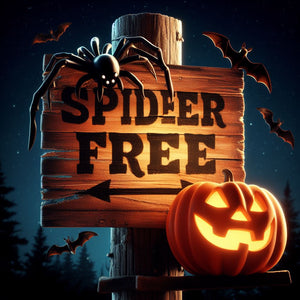
Bed bugs might be a common problem in the United States, but a lot of people still don’t know how the infestation begins and where the bed bugs come from. These notoriously persistent pests can be found on every surface and in every room where people reside, as they need our blood to survive and thrive.
But, how does such a small bug create a big problem, and are you responsible for the infestation in the first place?
If you want to know the origins of your bed bug problem, as well as the best ways to prevent re-infestation in the future, keep on reading. We have a detailed guide that will help you confirm the infestation, teach you how to get rid of bed bugs, and even be more careful with your items so re-infestation is less likely to occur.

Signs of a Bedbug Infestation
If you think you might have bed bugs in your home but are not sure, there are a few signs you can look for to confirm the infestation. There are some bugs that look like bed bugs, but considering how small and flat the bed bugs are, it’s rare to capture and see adult specimens when the infestation has just started.
Signs of bed bugs can include:
- Itchy and red bite marks on your skin each morning
- Blood stains on your sheets and bed
- Bed bug eggs, shells, and droppings in hiding places
- The unusual and musty odor that bed bugs secrete
- Dark red and rusty marks on the sheets, mattress, walls, and floors where the bed bugs move around
Most of the time people suspect an infestation when they get the itchy sensation and bite marks in the morning. While it’s possible you have been bitten by other insects, the most realistic scenario includes hungry bed bugs that come out during the night to feed.
But, if this is the first time you have had a bed bug infestation, you might be wondering where the bed bugs came from, and how they manage to find your bed. Stay tuned to find out more.
How Do You Get Bed Bugs in Your House?
Bed bugs are small, and persistent, and depend on the blood of mammals to survive. Considering humans are their favorite food on the menu they developed different ways to find and thrive in peoples’ homes.
Bed bugs are so small that they can fit in any crevice and hole, thus they hide and hitchhike in furniture, clothes, and luggage. It’s easy to get a severe infestation from a single female bed bug because it’s able to reproduce up to 250 eggs in a lifetime.
Here is how you get bed bugs:
Bed Bugs From Secondhand Furniture
Most of the time the bed bugs come into your home from the furniture you bring in. They love to hide in beds and sofas, where there is plenty of room to hide and the next blood meal is available each night.
So, before you bring any furniture into your home, make sure to inspect the tufts, mattress, seams, and cushions. If you notice any signs that bed bugs are present don’t carry the furniture in and instead treat it outside or completely discard it.
There are effective sprays you can use to treat minor infestations, but if you notice the piece of furniture is full of bed bugs, it’s best to forget about it. If the bed bugs come into your home, they will easily spread to the rest of your beds, mattresses, and sofas.

Bed Bugs From Hotels
Another popular location for bed bugs that can and will hitchhike to your home are hotels and motels. The bed bug is so common in the United States that even the most pristine hotels sometimes have infestations.
Because it’s easy to carry them home on your luggage, clothes, and other items you need to examine the hotel room before you settle in. Check the bed, mattress, and baseboard, and look around the small spaces where the bed bugs tend to hide. Some people bring a couple of glue traps to confirm that there are no bed bugs present, as they work fast and confirm the infestation in a couple of hours.
If you see anything remotely suspicious in your room, you should immediately change hotels, and never place your items directly on the furniture before you examine it.
Bed Bugs on Clothes and Sheets
Bed bugs can come from other apartments in the building, but most of the time they are unwanted guests you have brought on your clothes, luggage, and other items. Bed bugs can crawl into your bags, and backpacks and even hitchhike on your clothes, so if you visit hotels and other accommodations you need to make sure there are no bed bugs present.
Just in case, it’s always a good idea to wash your laundry with the specialized detergent that kills bed bugs and use the hottest washing cycle possible to eliminate the threat.
How Do You Get Bed Bugs in Your Bed?
Bed bug size allows them to hide in every possible nook and cranny, and the infestation usually goes by unnoticed until it’s severe. But, on a more positive note, the bed bugs really prefer the beds you use because it’s close to you and there is plenty of room to hide - so that’s where you can find them!
Bed bugs are attracted to the scent and carbon dioxide our bodies produce, and they know how to reach our beds where they can feed during the night. It’s the most convenient place for bed bugs to hide, but they can be found all around the home once the colony is big enough.
If you bring in a new bed bug from the sources mentioned above, they will soon find where you spend most of the time, and also discover the hiding places nearby. Considering they are nocturnal and people spend a lot of hours in their beds during the night, your bed soon becomes the optimal residence for new bed bugs.

How to Get Rid of Bed Bugs?
If you notice a bed bug infestation and based on the signs mentioned above you think you might have an issue, there are a couple of things you can do to get rid of bed bugs.
1. Confirm infestation
To be completely sure you are dealing with bed bugs you should confirm the infestation first. Examine the bed frame, mattress, and all the visible areas in your bedroom for any bed bugs, bed bug eggs, and rusty trails.
You can also use interceptor traps under each bed leg and glue traps close to your mattress to capture bugs and confirm the bed bug infestation.
Once you are sure you are dealing with these pests, you can move on to other steps.
2. Isolate furniture or room
Bed bugs can easily and quickly spread to every room and corner of your home, so it’s important to isolate the infested area and furniture. Items should not leave the quarantine area and new items shouldn’t go in.
It’s best to use different rooms to sleep in if you have the option and completely treat the infested room to get rid of all bed bugs.
3. Set up traps
When fighting against any pests persistence is the key to success, and you need to multitask in order to completely eradicate the bugs. This should include multiple traps all around the room such as the effective sticky traps on the mattress and the floor and the interceptor traps under the bed legs.
With multiple traps, you will eliminate a lot more bed bugs and monitor the progress of the infestation and the effectiveness of all other methods you might use.
4. Use sprays and Diatomaceous Earth
There are many different sprays and bed bug killers on the market, just make sure you choose the most eco-friendly and safe solution. It’s true that pesticides can kill bed bugs, but they are also very harmful to humans and pets, so use them with caution.
Eco-friendly sprays and Diatomaceous Earth powder are natural solutions that will kill all the bed bugs in their hiding places, and keep your family and pets safe.
5. Wash and clean everything
Considering bed bugs can hide in your clothes, towels, and sheets you need to make sure they are all thoroughly washed. Use the hot cycle on your washing machine and add the bed bug-killing detergent to eliminate all the eggs and adults in one wash.
Vacuum your mattress and clean the entire room, paying special attention to areas where the bed bugs usually hide including the baseboard, space between your bed frame and mattress, and all other potential small hiding places.
6. Add protection
Once you are sure the infestation is over, and your interceptor and glue traps are empty, you can focus more on protecting your mattress and pillows. With the specialized covers for your bed, you can be sure bed bugs are not able to get to your mattress and disturb your good night’s sleep ever again.
7. Call professionals
If the previous steps are not enough to help you manage the infestation and it’s becoming severe, the best thing you can do is call the professionals in your area. Pest control exterminators have the experience and the tools that will eliminate all the bed bugs from your home faster than DIY methods.

So, How to Prevent Bed Bugs?
We learned that bed bugs are resilient and very resourceful, and as such, they always find a way to come into our homes and create a disturbance. But, even though bed bugs can be found everywhere, there are a few things you can do to prevent an infestation.
To recap:
- Examine any furniture before you bring it into your home
- Be careful at hotels and other residences with your luggage and items
- Wash everything on a hot cycle to prevent accidental infestation
- Set up traps if you think there might be bed bugs present
If you, however, get some bed bugs and notice any of the infestation signs you can use our step-by-step list to eliminate them or call professional pest control to handle the issue faster.








